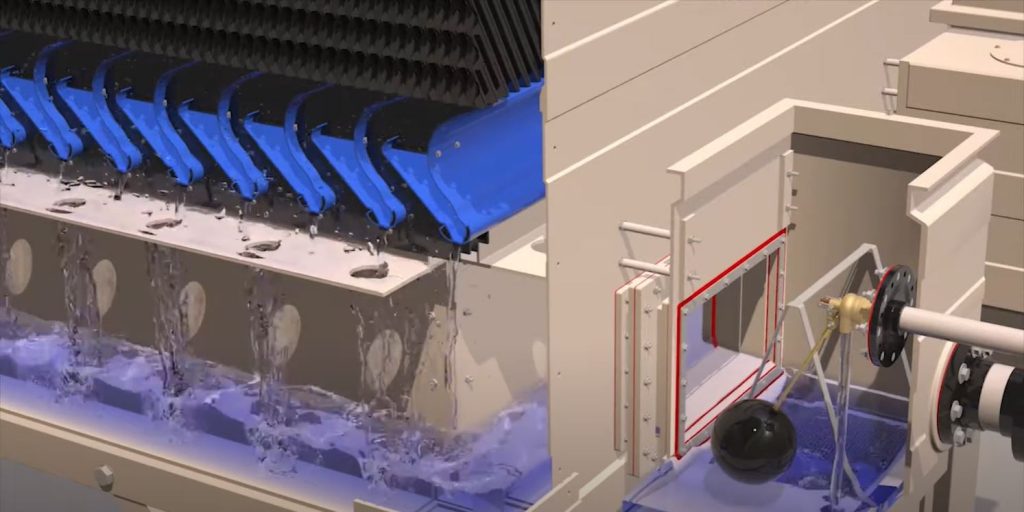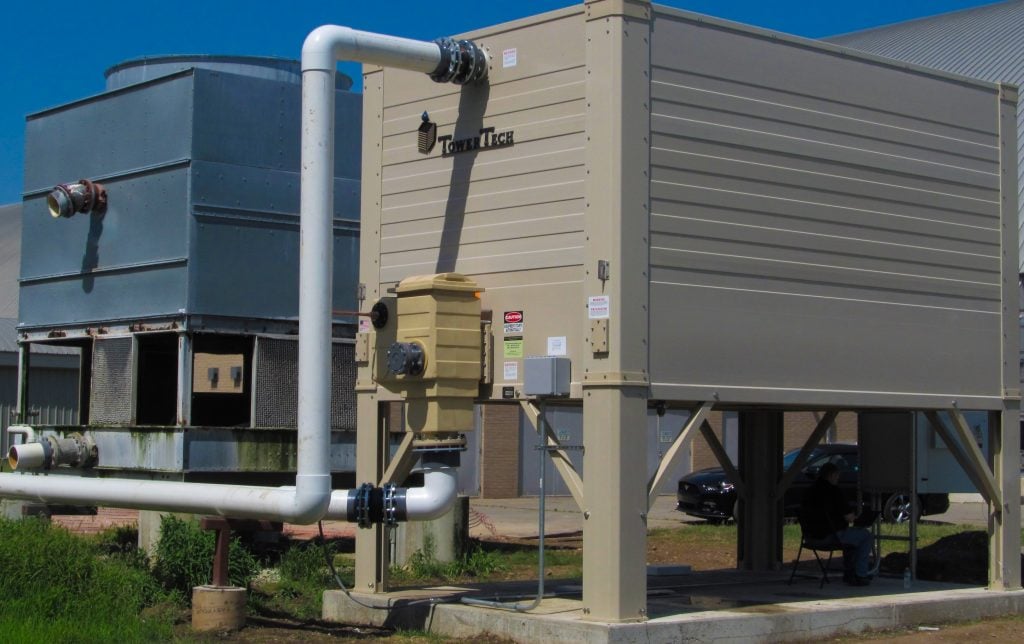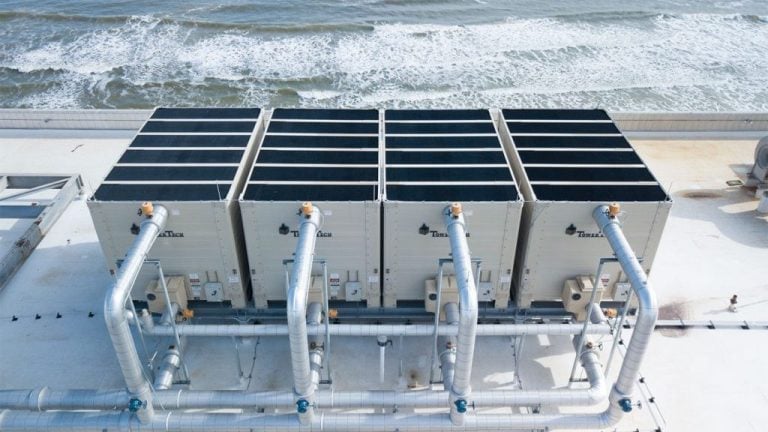
Companies are always on the hunt to improve efficiency and clamp down on costs. The stripped-down definition of efficiency is “the ability to do things well without waste.” When it comes to cooling towers, it can be difficult to identify ways to generate cost savings. At Tower Tech, the “waste not, want not,” mentality begins with the right design features.
Cooling towers that use conventional water distribution methods often overlook opportunities for crucial energy savings. Air-to-water contact area and mass flow liquid-to-gas ratio affect the efficiency of heat transfer. In simple terms, the larger the surface area, the less air velocity over the water surface is required. This means the horsepower of the fan moving the air is reduced along with kilowatt use per ton. The term kW/ton is commonly used for larger commercial and industrial air-conditioning, heat pump and refrigeration systems. It defines the ratio of energy consumption in kW to the rate of heat removal in tons at the rated condition. The lower the kW/ton – the more efficient the system.
The development of film media like PVC cross-fluted corrugated film block was thought to be a design breakthrough, but it increased the contact surface area without increasing the tower box size. This configuration quickly caused scaling and biomass fouling in the air channels, adversely affecting airflow. Water treatment is required to prevent bio-growth fouling and the fill must remain wetted to avoid evaporative scaling—adding extra steps and higher operational costs.
Conventional water distribution uses a fixed orifice spray nozzle that produces a round pattern above a rectangular fill pack. However, water flow rates below the design point will not produce a full spray pattern, causing void areas to appear. Optimal efficiency is achieved when the liquid-to-gas ratio is evenly balanced throughout the fill media. Short or overlapping spray patterns can’t accomplish this.
Tower Tech’s cooling tower design features a water distribution system that can instantly respond to variable flow rates and keep all of the fill media evenly wetted and in service. Its’ patented constant pattern, variable flow distribution system was part of an environmental impact evaluation and life-cycle cost analysis conducted by The University of Oklahoma’s School of Civil Engineering and Environmental Science.
One significant finding of the study was the savings in fan energy costs that were possible using Tower Tech’s unique multiple-fan design. For cities with 99 percent wet bulb temperatures above 77 degrees Fahrenheit, savings in annual fan motor costs of up to 54 percent were realized. For cities with 99 percent wet-bulb temperatures below 77 degrees Fahrenheit, savings in annual fan motor costs of up to 46 percent were observed. Savings were calculated as the actual power used by the fan motors, not the brake horsepower driving the fans.
A comparison of lifetime costs (purchase/transportation and fan/pump energy costs) between Tower Tech’s fiber reinforced polymer (FRP) cooling towers and the non-corrosive towers of three other manufacturers was also conducted. The towers were sized for the air conditioning market (400-2400 tons) and for the industrial market (6000-30000 GPM). Cooling tower lifetimes of 5-, 10-, 20-, and 30-years were considered for each tower size. Tower Tech’s cooling towers emerged with the lowest lifetime costs.
Contact us and let us help you start saving money today.


